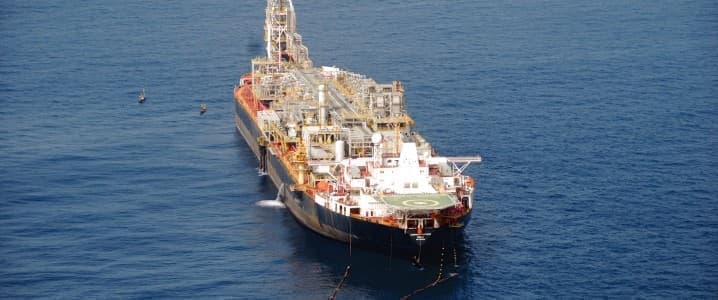Africa’s Most Interesting Untapped Oil Play

When writing the article on this year’s Top Oil Wildcats, one of the hottest candidates had to be dropped out of the list. Not because the prospect turned out to be sub-commercial, far from it, it remains one of Africa’s most interesting untapped plays, potentially opening up a new country with no previous exposure to the world of energy. As Senegal and Mauritania started to break their way onto the energy maps of Western Africa, Guinea Bissau has remained a relative outlier. At the same time it needs to be pointed out that lack of officially recognized discoveries does not necessarily mean lack of hydrocarbons, as can be attested by the Atum prospect. Atum remains one of the hottest plays in offshore Africa, an overlooked gem that would only need a little bit of political stability to shine.
Recent big discoveries in Senegal' offshore, such as FAN-1 and SNE (the latter being the largest oil discovery globally in 2014), shortly thereafter followed by new plays in Mauritania’s offshore such as Orca, have unearthed an untapped frontier area that is rich in both oil and gas. Over the past decade Mauritania and Senegal have advanced quite well in terms of appraising their offshore territory, however the southern flank of the MSGBC Basin (short for Mauritania, Senegal, Gambia, Guinea-Bissau and Guinea-Conakry) has been lagging behind. The root causes of this are institutional, although Guinea Bissau adopted a new Petroleum Law in 2014, its implementation was never really tested in real life. In countries where peaceful handover of power is still a questionable concept, the anticipation of hydrocarbon discoveries to come, coupled with a heightened sense of political infighting, has created a cumbersome challenge.
The hydrocarbon story of Guinea Bissau is a fairly standard one for a small West African nation.
The tiny country has no commercial discoveries up to date, with official 2P reserves estimated at 12-13 million barrels (equivalent to the Sinapa oil discovery within Block 02). The last offshore wildcat that Bissau had seen dates back to 2007 when the UK-based firm Premier Oil spudded the Eirozes-1 well in the Esperança block. Drilled into a total depth of 2250 metres in water depth of 100 metres, the well turned out to be dry. This failure has prompted Premier Oil to leave Guinea Bissau’s offshore in December 2007 – thereafter Svenska Petroleum assumed operatorship over the block. Whilst the Atum prospect, located farther out in deeper waters, has been known for quite some time already, financial issues of license-holding firms and the general lack of appetite for genuine frontier drilling has kept the ambition down.
The Atum prospect is located in the westernmost part of Block 02, partially spilling over into Block 04. It is abutted from the left by the Anchova prospect and from the right by the Sardinha prospect (you have guessed it right, the fishy concept extends to Atum, too, the name of the blocks means “tuna”). What is new about the Atum prospect? First and foremost, Atum is assumed to become Guinea Bissau’s first-ever deepwater well. Second, Atum is an analogue of Senegal’s SNE-1: it, too, is a shelf-edge play, in similar water depths (900 metres vs 1100 metres) and targeting the same Upper Albian deposits. The unrisked prospective resources of Atum are assessed at 471 MMbbls, i.e. very similar to those of SNE (563 MMbbls). Should the prospective drillers also aim for the Anchova prospect next to Atum, the combined reserves total would increase to 568MMbbls.
Atum has up to now suffered from one main deficiency – lack of a financially robust oil major. Throughout the 2010s, the Swedish Svenska Petroleum was seeking to farm out interests in Blocks 02 and 04A to fund its ambitious drilling plans. Struggling to go at it completely alone, Svenska reached an agreement in August 2019 with the Chinese CNOOC. CNOOC was to purchase 55.55% of the Sinapa and Esperança license blocks (i.e. Block 2 and Blocks 4A/5A) for the duration of the exploration phase, to be converted into a regular 50% participating interest should the project be deemed commercially viable.
The transaction was assumed to be concluded at some point in Q3 2019, once all the authorities of Guinea Bissau provide all regulatory approvals – needless to say, at that point (just as now) Block 02 was the most promising offshore play that Bissau had. Upon receiving all required approvals, drilling the Atum prospect in Block 02 was supposed to take place in Q1 2020, an ambition that never materialized.
Domestic political turmoil is also one of the main reasons underlying Guinea Bissau’s inability to move swiftly enough on regulatory approvals. For a brief period in early 2020 the West African nation had two presidents simultaneously, pitting the camp of Umaro Embaló, the winner of the presidential elections, and Domingos Simoes who refused to acknowledge the results of the ballot and had Cipriano Cassama elected as interim president. It was the President that was bound to approve CNOOC’s farm-in into Block 02 of Guinea Bissau’s offshore and with both parties fully focused on tripping up political opponents rather than kickstarting the country’s oil and gas sector, the end result was worse than anybody could have forethought.
Against this background, not only did CNOOC quit the intended deal, Svenska Petroleum sold all of its Guinea Bissau acreage (78.57% in Blocks 02, 04A and 05A) to the Norwegian PetroNor in November 2020. It seems likely that PetroNor, joined by the embattled Australian company FAR (21.42% interest), would also prefer to have a go at Atum with a heavy-hitting partner. The acreage license covering exploration works in Block 02 was extended by further 3 years into 2023, therefore the road is clear for interested parties. With this, the spudding of the Atum-1 wildcat is most likely to take place in 2022.




